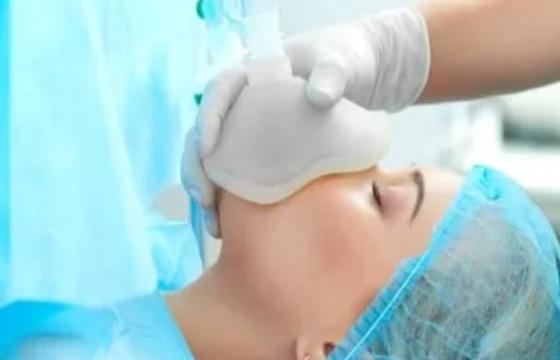General Anesthesia
Anesthesia is essential in modern dentistry, improving the patient experience by assuring comfort, safety, and efficacy during many dental treatments. From basic cleanings to complex operations, the judicious use of anesthetic allows dentists to deliver treatments with accuracy while reducing patient discomfort and anxiety. Understanding the various forms of anesthesia and their uses in dental treatment is critical for both patients and dental practitioners.

What is General Anesthesia
Anesthesia in dental treatment is the use of drugs to numb particular parts of the mouth or produce relaxation and unconsciousness, ensuring patient comfort and pain control during operations. It can range from local anesthesia, which blocks pain signals in a specific location, to sedation techniques such as nitrous oxide or intravenous sedation, which provide varied degrees of relaxation or oblivion. Anesthesia enables dentists to execute treatments more effectively while reducing patient discomfort and anxiety.
How long time takes of General Anesthesia Process
Types of Anesthesia in Dentistry
Dental anesthetic is divided into numerous categories, each customized to the unique demands of particular patients and procedures:
Local anesthetic is the use of drugs to numb a specific area of the mouth, preventing pain signals from reaching the brain. It is frequently utilized for cavity fillings, root canals, and tooth extractions. Local anesthetic numbs the treatment region, allowing dentists to execute operations more easily and swiftly while reducing patient discomfort.
Nitrous oxide sedation (laughing gas) is a moderate sedative given through a mask put over the nose. It produces a feeling of relaxation and euphoria while allowing patients to remain awake and attentive throughout dental operations. Nitrous oxide is commonly used for individuals with mild to moderate dental anxiety or for treatments that do not require a deeper level of sedation.
Oral Sedation: Oral sedatives are administered in the form of a tablet or liquid before to the dental operation. They produce a deeper level of relaxation than nitrous oxide and are typically utilized for patients experiencing moderate to severe dental anxiety or for lengthier treatments. Oral sedation makes patients feel more at ease during dental procedures, which typically results in a more pleasant experience.
Intravenous (IV) Sedation: Sedative medicines are administered directly into the circulation via a vein. This approach provides for exact control over the degree of sedation and can create a deeper state of relaxation or coma if necessary. IV sedation is typically utilized for difficult or surgical treatments, as well as for individuals suffering from severe dental fear.
Benefits of Anesthesia in Dental Treatments
Pain Management: One of the key advantages of anesthesia in dentistry is its ability to effectively control pain during dental treatments. Anesthesia keeps patients comfortable throughout the process by numbing the treatment region or causing them to relax.
Anxiety Reduction: Dental anxiety is a typical problem for many patients, which frequently leads to avoidance of dental care. Anesthesia reduces anxiety by establishing a soothing and stress-free atmosphere in which patients may receive treatments with more ease and comfort.
Improved Treatment Outcomes: By assuring patients' comfort and relaxation, anesthesia allows dentists to execute treatments with more precision and efficiency. This can lead to better treatment outcomes and a more pleasant overall experience for patients.
Accessibility: Anesthesia makes dental care more accessible to a wider spectrum of patients, including those with dental phobias, special needs, or medical problems that make standard dental procedures difficult.
Considerations and Safety
While anesthesia provides significant benefits in dental treatment, dentists must thoroughly assess each patient's medical history and overall condition before giving anesthetic. Proper monitoring and supervision throughout the operation are also essential to guarantee patient safety. Patients should discuss any concerns or medical issues with their dentist to ensure that the most suitable type and amount of anesthetic is chosen.
To summarize, anesthesia is critical in modern dentistry practice because it provides patients with comfort, safety, and access to necessary dental procedures. Patients may make more educated decisions about their oral health and well-being by learning the many forms of anesthetic available and how they are used in dental treatment, resulting in a good dental experience and better overall oral health.
Frequently asked questions about General Anesthesia
*The treatment pages provided on this platform are intended for informational purposes only and do not constitute medical or dental advice, diagnosis, or treatment recommendations. The information presented on these pages is not a substitute for professional medical or dental advice from qualified healthcare providers.
*By accessing and using the treatment pages on this platform, you acknowledge and agree to the terms of this disclaimer. If you do not agree with these terms, please refrain from using the treatment pages.